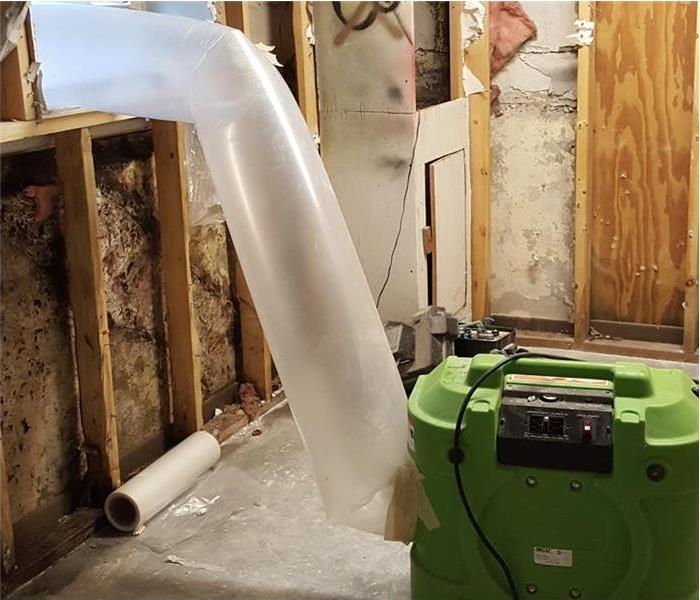Be Proactive About Mold Prevention
4/9/2019 (Permalink)
Mold Prevention
When business owners think about water damage, they likely consider flooding or broken pipes. However, the mold is probably the furthest thing from their minds. Fungal development is a serious side effect of leaks and flooding, and it is something that can spread well beyond the initial contamination site. Unfortunately, its growth does not only occur after significant catastrophes. In fact, your property may have a mold problem right now and you don’t even realize it. Therefore, to reduce your financial risk, it may be beneficial to become proactive about mold prevention sooner instead of later.
1. Repair Seals and Known Leaks
Mold growth most often occurs around sources of moisture. To prevent its development, you should inspect your property, particularly around windows, doors and rooflines where seals may have worn away or sheathing may have been damaged. If you find any weak points or cracks, replace these areas. Additionally, if you know of any small leaks in your plumbing, repair them.
2. Control Moisture Levels
While water damage is an obvious source of mold development, you should not limit yourself to only inspecting areas prone to leaks. Check areas where humidity is higher than average, such as basements and attics. Keep humidity levels consistent throughout the property by installing dehumidifiers on the premises.
3. Improve Ventilation
Beyond controlling humidity and moisture levels with dehumidifiers, you can also use proper ventilation methods by installing HVAC systems and fans. Air returns that are built into HVAC units help to keep air moving, while fans help to reduce the level of humid air in kitchens, laundry rooms, bathrooms and attics.
4. Install Mold-Resistant Products
Contact a water damage remediation specialist in the Rosemont, IL, area to see about putting in mold-resistant products. Drywall and even fabrics exist that repel mold growth.
While water damage is a significant source of fungal development, it is not the only source. Control the level of moisture in your building by ensuring seals are tight and humidity is regulated through the use of humidifiers and ventilation systems. Be proactive.



 24/7 Emergency Service
24/7 Emergency Service
